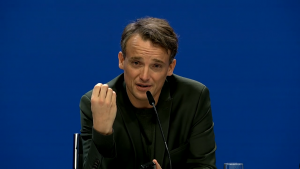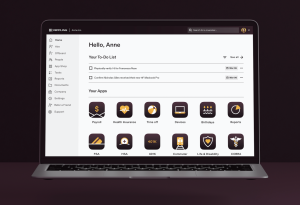Soccer fans tire of over-digitized experiences as Microsoft kicks off cloud deal with Real Madrid
![]() Real Madrid, ranked the world’s best soccer club of the 20th century (or football,as it’s called outside the U.S.), have recently struck up a deal with Microsoft to transform how their live games are watched. Employing Microsoft’s cloud solutions, fans will now be privy to a closer inspection of the game with personalized and customized content and digital services. Through virtual access at Real Madrid’s Santiago Bernabéu stadium, fans will also be able to share their experiences of the games in real time through social channels.
Real Madrid, ranked the world’s best soccer club of the 20th century (or football,as it’s called outside the U.S.), have recently struck up a deal with Microsoft to transform how their live games are watched. Employing Microsoft’s cloud solutions, fans will now be privy to a closer inspection of the game with personalized and customized content and digital services. Through virtual access at Real Madrid’s Santiago Bernabéu stadium, fans will also be able to share their experiences of the games in real time through social channels.
Florentino Pérez, president of Real Madrid, unveiled the partnership with Orlando Ayala, Microsoft’s Corporate Vice President and Chairman, Emerging Markets, from the presidential box at the stadium on November 18.
Tablets such as Microsoft’s Surface Pro 2 are already being used in sports to help coaches and players go over tactics and review plays and games – the NFL currently utilize tablets for training purposes, while iPads have been part of sports teams training programs for some years. The recent digital technology, however, is as much fan-based as it is focused on improving elements of the game.
Ayala wrote on the official Microsoft blog that while the company’s Surface Pro 3 will be a tool for coaches, “the digital platform we’re designing with Real Madrid is maniacally focused on putting fans at the center, and opening access and control of rich content and experiences that bring them closer to their passion for the game and the team.”
The four-year business, technology and marketing partnership is speculated to be worth around $30 million dollars, and judging by Ayala’s bombastic statement, “Together we will make Real Madrid a model to be followed by the sports industry”, it’s likely Microsoft has its sights set on implementing such possibly profound partnerships with other sports teams around the world.
Are we overthinking game time?
Comments on some of Real Madrid’s fan sites were mixed however. Some fans seemed excited, others blasé, but a few significant others seemed to like the way they watch the game as it already is. One fan wrote in a comment, that mirrored other poster’s sentiments, “I’m not super keen on having even more convenient ways to follow absolutely everything that goes on with Real Madrid… if I spend any more time reading blogs (like this one), listening to podcasts, scouring [Twitter], and watching every single match (at least once, but usually twice) people might think I have an issue.”
Digitizing sports games is becoming a necessity of sports clubs who want to attract the younger generation of sports fans. Michelle McKenna-Doyle, senior vice president and CIO of the NFL, said earlier this year about the change in how we watch sports, “It does bear out in the research that as generational shifts happen, the expectation level goes more from a ‘this would be nice to have’ to a ‘what, you don’t have it?’ kind of feature. I have a lot of contacts in college sports, and it is definitely the case where they are seeing some of their younger fans leave if they don’t have connectivity.”
Some older fans will likely scoff at how games are watched bit-by-bit through certain devices, and probably recall wistfully the days when fans embraced each other and the action was taking place on the field. Other comments on game technology at the stadium ask, what’s the point in leaving your own home big screen to watch a smaller one at the stadium: “if it’s that important to you to be on your mobile device, why bother to come to the stadium? Isn’t the point of being at the stadium, enjoying the ‘live-ness’ ?”
Joe Inzerillo, senior vice president of multimedia and distribution at MLB (Major League Baseball) Advanced Media, summed-up the digital transformations for sports games, and mixed fans responses, in an interview with Tech Republic, “Whether it’s good or bad that everyone is plugged in and connected all the time is a debate for philosophers. We just try to predict where our fans are going to go.”
photo credit Ahmad Zamri Ahmad Zahir via photopin
A message from John Furrier, co-founder of SiliconANGLE:
Your vote of support is important to us and it helps us keep the content FREE.
One click below supports our mission to provide free, deep, and relevant content.
Join our community on YouTube
Join the community that includes more than 15,000 #CubeAlumni experts, including Amazon.com CEO Andy Jassy, Dell Technologies founder and CEO Michael Dell, Intel CEO Pat Gelsinger, and many more luminaries and experts.
THANK YOU













